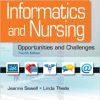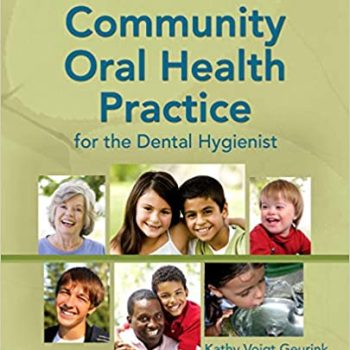Test Bank For Infection Control and Management of Hazardous Materials for the Dental Team 5th Edition by Chris H. Miller
Chapter 2: Characteristics of Microorganisms
Test Bank
MULTIPLE CHOICE
1. Regular bacteria, excluding Rickettsia and Chlamydia, multiply:
|
A. |
in the absence of nutrients. |
|
B. |
only when they are inside of living cells. |
|
C. |
when they are outside of living cells. |
|
D. |
only when the temperature is below 7° C. |
ANS: C
|
Feedback |
|
|
A |
Nothing can grow in the absence of nutrients. |
|
B |
Rickettsia and Chlamydia are the only bacteria that can grow inside living cells. |
|
C |
Regular bacteria do not need to be inside living cells to grow. They can obtain their nutrients from the environment. |
|
D |
Only the special bacteria called psychrophiles can grow at these low temperatures. |
REF: Culturing Bacteria, page 13 OBJ: 2
2. Viruses multiply:
|
A. |
in the absence of nutrients. |
|
B. |
only when they are inside of living cells. |
|
C. |
when they are outside of living cells. |
|
D. |
only when the temperature is below 7° C. |
ANS: B
|
Feedback |
|
|
A |
Nothing can grow in the absence of nutrients. |
|
B |
Viruses need the nutrients and metabolic machinery of living cells to multiply. |
|
C |
Viruses cannot obtain their nutrients from the environment. |
|
D |
Only the special bacteria called psychrophiles can grow at these low temperatures. |
REF: Life Cycle, page 15 OBJ: 5
3. Which of the following microbes is a yeast?
|
A. |
Streptococcus mutans |
|
B. |
Trichomonas vaginalis |
|
C. |
Candida albicans |
|
D. |
Staphylococcus aureus |
ANS: C
|
Feedback |
|
|
A |
This is a bacterium. |
|
B |
This is a protozoan. |
|
C |
Candida albicans can exist as a yeast, which is a special fungus. |
|
D |
This is a bacterium. |
REF: Fungi, page 16 OBJ: 6
4. Which of the following microbes is a type of fungus?
|
A. |
Influenzae |
|
B. |
Candida albicans |
|
C. |
Trichomonas vaginalis |
|
D. |
Streptococcus mutans |
ANS: B
|
Feedback |
|
|
A |
This is a virus. |
|
B |
Candida albicans can exist as a yeast or filamentous fungus. |
|
C |
This is a protozoan. |
|
D |
This is a bacterium. |
REF: Fungi, page 16 OBJ: 6
5. A yeast is what type of microorganism?
|
A. |
Bacterium |
|
B. |
Fungus |
|
C. |
Virus |
|
D. |
Protozoan |
ANS: B
|
Feedback |
|
|
A |
Bacteria cannot form yeast. |
|
B |
A yeast is a special type of fungus. |
|
C |
A virus cannot form yeasts. |
|
D |
Protozoa cannot form yeasts. |
REF: Fungi, page 16 OBJ: 6
6. Thrush is caused by:
|
A. |
Candida albicans. |
|
B. |
Streptococcus mutans. |
|
C. |
Staphylococcus aureus. |
|
D. |
human herpesvirus 1. |
ANS: A
|
Feedback |
|
|
A |
Oral candidiasis (e.g., thrush or denture stomatitis) is caused by the fungus Candida albicans, which may exist as a yeast cell or as a filamentous fungus (mold). |
|
B |
Oral candidiasis (e.g., thrush or denture stomatitis) is caused by the fungus Candida albicans, which may exist as a yeast cell or as a filamentous fungus (mold). |
|
C |
Oral candidiasis (e.g., thrush or denture stomatitis) is caused by the fungus Candida albicans, which may exist as a yeast cell or as a filamentous fungus (mold). |
|
D |
Oral candidiasis (e.g., thrush or denture stomatitis) is caused by the fungus Candida albicans, which may exist as a yeast cell or as a filamentous fungus (mold). |
REF: Fungi, page 16 OBJ: 6
7. Bacilli are shaped like:
|
A. |
spheres. |
|
B. |
cylinders or rods. |
|
C. |
curved or spiral forms. |
|
D. |
flat disks. |
ANS: B
|
Feedback |
|
|
A |
Spheres are not bacilli. |
|
B |
Bacilli are bacterial cells shaped like rods or cylinders. |
|
C |
Spirilla are curved or spiral forms. |
|
D |
There are no microbes shaped like a flat disk. |
REF: Size and Shape, page 8 OBJ: 1
8. Cocci are shaped like:
|
A. |
spheres. |
|
B. |
cylinders or rods. |
|
C. |
curved or spiral forms. |
|
D. |
flat disks. |
ANS: A
|
Feedback |
|
|
A |
Spherical cells are called cocci. |
|
B |
Rod-shaped cells are called bacilli. |
|
C |
Curved or spiral cells are called spirilla. |
|
D |
This is not a shape associated with bacteria. |
REF: Size and Shape, page 8 OBJ: 1
9. Which of the following bacterial structures controls the flow of nutrients and waste into and out of the cell?
|
A. |
Cell wall |
|
B. |
Flagellum |
|
C. |
Cytoplasmic membrane |
|
D. |
Capsule |
ANS: C
|
Feedback |
|
|
A |
The cell wall protects the cell from being crushed. |
|
B |
The flagellum provides locomotion. |
|
C |
One of the functions of the cytoplasmic membrane is to regulate the entrance and exit of nutrient materials and waste products. |
|
D |
The capsule keeps the cell from drying out and is antiphagocytic. |
REF: Cytoplasmic Membrane, page 8 OBJ: 1
10. Which of the following bacterial structures interferes with phagocytosis?
|
A. |
Cell wall |
|
B. |
Flagellum |
|
C. |
Cytoplasmic membrane |
|
D. |
Capsule |
ANS: D
|
Feedback |
|
|
A |
The cell wall protects the cell from being crushed. |
|
B |
The flagellum provides locomotion. |
|
C |
One of the functions of the cytoplasmic membrane is to regulate the entrance and exit of nutrient materials and waste products. |
|
D |
The capsule’s “slimy” nature interferes with phagocytosis. |
REF: Capsule, page 10 OBJ: 1









Reviews
There are no reviews yet.